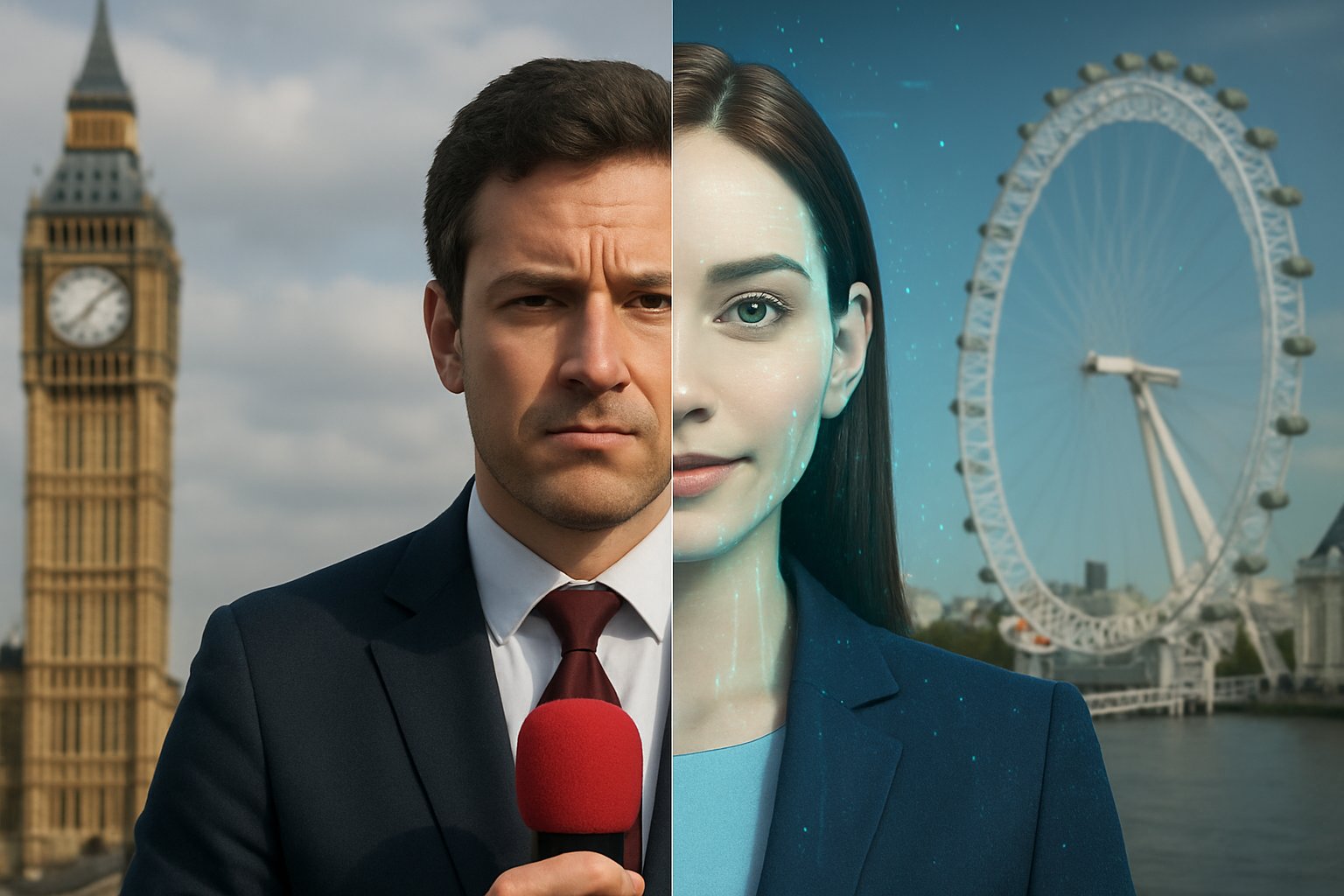
AI CERTS
7 hours ago
Channel 4’s AI Presenter Makes UK Television History
Ratings underline the stunt’s reach. Roughly 564,000 people watched live, making the show Channel 4’s second-most-watched programme that night. Consequently, executives achieved their goal of sparking widespread debate. This article examines how the avatar was built, why the move matters for Journalism, what it signals for Broadcasting, and how Synthetic Media will reshape labour dynamics.

Historic Broadcast Moment Unveiled
Channel 4 framed the experiment as a one-off demonstration. Head of News Louisa Compton stated, “The use of an AI presenter is not something we will be making a habit of.” Nevertheless, she argued the reveal showed audiences how easily digital humans can fool even seasoned viewers. Meanwhile, producer Kalel Productions and creative partner Seraphinne Vallora raced to finish the avatar on schedule.
Nick Parnes, Kalel’s CEO, described the project as “nail-biting” yet cost-effective. Furthermore, he predicted weekly deployments would soon become cheaper than human talent. In contrast, critics said hiding the truth until the end risked eroding audience trust. These opposing views set the tone for subsequent industry conversations.
The stunt’s timing felt deliberate. It arrived after a year of mounting union pressure over digital performers. Therefore, Channel 4’s move instantly became a case study in disclosure ethics. These early reactions shape every following section.
Tech Behind Avatar Creation
Behind the scenes, engineers combined image generation, motion synthesis, and neural speech. Additionally, prompt engineering crafted Gaban’s facial structure, while animation models produced natural gestures. Voice cloning tools delivered a warm, journalistic cadence.
Persistent latency issues required post-production smoothing. Consequently, the programme remained pre-recorded. A live broadcast would expose micro-sync errors still haunting many Synthetic Media workflows. Even so, the final product convinced most viewers until the climactic confession.
Persistent Technical Limits Now
Digital humans still struggle with spontaneous interviews. Moreover, real-time fact-checking is beyond their scope. Guardian critic Stuart Heritage labelled the effect “dizzyingly grim,” noting subtle mouth blurs during quick turns. Therefore, technical staff concede that an AI Presenter cannot yet replace agile reporters during breaking news.
These constraints did not stop Channel 4 from pushing boundaries. However, they remind decision-makers that photorealism is only part of credible Journalism. This reality flows into the ethical debate next.
Ethical Trust Questions Raised
Audience deception sits at the heart of the controversy. Critics argue viewers deserve immediate disclosure when Synthetic Media appears. Conversely, Channel 4 insisted the late reveal served clear editorial purpose—demonstrating how belief can be manipulated.
Unions added labour concerns. Equity warned that normalising digital hosts risks undervaluing human craft. Additionally, the “liar’s dividend” looms: bad actors may deny authentic footage by citing possible fakery. Consequently, regulators face pressure to update guidelines for transparent Broadcasting.
Key ethical points
- Disclosure timing influences audience trust.
- Consent for training data remains unclear.
- Regulatory standards lag technological speed.
These issues underscore the complex moral terrain. Nonetheless, economic factors also influence future adoption, as explored next.
Labour Market Impact Forecast
Dispatches quoted IPPR modelling that up to eight million UK jobs could vanish in a pessimistic scenario. Moreover, repetitive media tasks sit firmly in the firing line. Parnes asserted that ongoing improvements will make an AI Presenter ever more affordable.
Consider the following figures:
- 564,000 viewers witnessed the reveal.
- One avatar cost less than a seasoned anchor’s annual salary.
- IPPR warns 8 million roles risk displacement.
Consequently, newsrooms face tough staffing decisions. However, new opportunities may emerge for technologists who maintain digital humans. Professionals can enhance their expertise with the AI+ Everyone™ certification.
These employment shifts feed directly into industry sentiment. The next section reviews reactions across the sector.
Diverse Industry Reactions Today
Reactions stretched from exhilaration to alarm. Tech enthusiasts hailed the milestone for Synthetic Media. Furthermore, several Broadcasting executives quietly asked vendors for cost breakdowns.
Meanwhile, veteran journalists voiced skepticism. They stressed that empathy and investigative instincts remain uniquely human. Nevertheless, some editors saw niche uses, such as multilingual explainers or overnight bulletins.
Vendors like Synthesia and D-ID reported an uptick in demo requests after the broadcast. Consequently, the market for digital presenters appears poised for growth. This momentum raises regulatory questions addressed next.
Regulation And Next Steps
Currently, Ofcom offers no explicit rules for AI hosts. However, lawmakers are drafting wider AI regulations that could cover disclosure. Additionally, EU and US regulators discuss watermark standards for generated video.
Channel 4 cited internal editorial AI guidance when approving the stunt. In contrast, critics ask for public policies mandating up-front labels. Therefore, broadcasters may soon face mandatory on-screen identifiers when an AI Presenter appears.
Subsequently, industry groups propose accreditation schemes for ethical use. Certifications, including AI+ Everyone™, could help professionals demonstrate compliance readiness. These initiatives aim to balance innovation with accountability.
Regulatory clarity will shape investment decisions. However, organisations must act now to build transparent workflows.
These governance debates close the circle on technology, ethics, and economics. The conclusion distills core insights.



